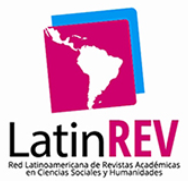Vigilancia de Escherichia coli O157: H7 en alimentos y aguas
DOI:
https://doi.org/10.24039/cv2013117Resumen
Los alimentos como la carne molida de vacuno, queso, jamón y lechuga son de alta demanda de consumo por la población y son susceptibles de contaminación. Así mismo, las aguas de los ríos son usadas por pobladores de las riberas. En nuestro medio, no contamos con reportes sobre estudios de vigilancia de E. coli O157:H7 en muestras de aguas del río Rímac este, ni en alimentos en los mercados de Lima. Para la evaluación de alimentos se procedió como lo describe Feng & Weagant (2002) y para aguas se utilizó 150 mL de la muestra con 150 mL de TSBm doble concentrado e incubado a 37ºC por 18 h y transferido a agar Mac Conkey e incubado a 37ºC por 24 h. Se seleccionaron 5 colonias lactosa positiva por muestra e identificadas como E. coli, así como su incapacidad para utilizar el sorbitol y la determinación del antígeno somático O157 y el flagelar H7, confirmándose E. coli O157:H7. De las 309 muestras de alimentos, 82 lechugas, 76 quesos, 76 jamón y 75 de carne molida, procesadas, 187 resultaron positivas para E. coli (60,5%), correspondiendo a 47 provenientes de lechugas, a 60 de queso fresco, a 48 de jamón y a 32 de carne molida; mientras que de las 75 muestras de aguas de río procesadas, 36 resultaron positivas para E. coli (48%). De 223 cultivos de E.coli evaluados, cinco (5) cultivos fueron positivos para E. coli O157:H7, correspondiendo a 2 de lechugas (2,4%) y 3 de carne molida (4%). No se detectó E. coli O157:H7 en muestras de aguas, jamón y queso. La lechuga puede representar un alimento de alto riesgo en la transmisión de E. coli O157:H7 al hombre, seguido de la carne, por contaminación cruzada o por mal cocimiento.
Palabras claves: E. coli O157:H7, alimentos, aguas
Descargas
Citas
Ackers M., Mahon B., Leahy E., Goode B., Damrow T., Hayes P.. (1998). An Outbreak of Escherichia coli O157:H7 Infections Associated with Leaf Lettuce Consumption. The Journal of Infectious Diseases, 177, 1588-1593.
Armstrong G., Hollingsworth J. y Morris G. (1996). Emerging Foodborne Pathogens: Escherichia coli O157:H7 as a model of entry of a new pathogen into the food supply of the developed world. Epidemiologic Reviews, 18(1), 29–51.
Beutin L., Krause G., Zimmermann S., Kaulfuss S. y Gleier K. (2004). Characterization of shiga toxin-producing Escherichia coli strains isolated from human patients in Germany over a 3-year period. Journal of Clinical Microbiology, 42(3), 099-1108.
Bhat M., Denny J., MacDonald K., Hofman J., Jain S., y Lynch M. (2007) Bhat M., Denny J., MacDonald K., Hofman J., Jain S., y Lynch M. (2007). Escherichia coli O157:H7 infection associated with drinking raw milk- Washington and Oregon, November-December 2005. Morbidity and Mortality Weekly Report, 56(08), 165-167.
Bopp, C., Brenner F., Fields, P., Wells, J., y Strockbine N. (2003). Escherichia, Shigella, and Salmonella. En Murray, P.; Baron, E.; Pfaller, M.; Jorgensen, J. y Yolken, R. (Eds.), Manual of clinical microbiology (654–671). Washington, D. C., USA: ASM Press.
Centers for Disease Control and Prevention. (1993). Update: multistate outbreak of Escherichia coli O157:H7 infections from hamburgers-western United States, 1992-1993. Morbidity and Mortality Weekly Report, 42, 258-63
Centers for Disease Control and Prevention. (2005). Outbreaks of Escherichia coli O157:H7 Associated with Petting Zoos - North Carolina, Florida, and Arizona, 2004 and 2005. Morbidity and Mortality Weekly Report, 54(50), 1277-1280.
Center for Disease Control and Prevention. (2009). Surveillance for Foodborne Disease Outbreaks --United States, 2006. Morbidity and Mortality Weekly Report; 58(22), 609-615.
Feng P. y Weagant S. (2002). Diarrheagenic Escherichia coli. En U. S. Food and Drug Administration (Ed.), Bacteriological Analytical Manual, (4.20-4.25). U.S.A.: AOAC International.
Gage R., Crielly A., Baysinger M., Chernak E., Herbert G. y Johnson-Entsuch A. (2001). Outbreaks of Escherichia coli O157:H7 Infections among children Associated with farm visits –Pennsylvania and Washington, 2000. Morbidity and Mortality Weekly Report, 50(15), 293-297.
Grant J., Wendelboe A., Wendel A., Jepson B., Torres P., Smelser C. (2008). Spinach-associated Escherichia coli O157:H7 Outbreak, Utah and New Mexico, 2006. Emerging Infectious Diseases, 14(10), 1633-1636.
Griffin P. y Tauxe R. (1991). The epidemiology of infections caused by Escherichia coli O157:H7, other enterohemorrhagic E. coli, and the associated hemolytic uremic syndrome. Epidemiologic Reviews, 13, 60-98.
Guerrero C., Guillén A., Rojas R. y Meza R. (2002). Escherichia coli Enterohemorrágico (ECEH) en carnes de ganado vacuno. II- FTM – Oficina Central de Investigación-Universidad Nacional Federico Villarreal.
Guerrero C., Guillén A., Rojas R. y Meza R. (2003). Escherichia coli Enteropatógeno (ECEP) en alimentos. IIFTM - Oficina Central de Investigación- Universidad Nacional Federico Villarreal
Guth B., López de Souza R., Vaz T. e Irino K. (2002). First shiga toxin-producing Escherichia coli isolate from a patient with hemolytic uremic syndrome, Brazil. Emerging Infectious Diseases, 8(5), 535-536.
Huapaya B., Huguet J., Suárez V., Torres Y., Montoya I., Salazar E. (2001). Primer aislamiento de Escherichia coli O157:H7 enterohemorrágica en el Perú. Revista Peruana de Medicina Experimental y Salud Publica, 18, (1-2), 38-39.
Keen J., Wittum T., Dunn J., Bono J., y Durso L. (2006). Shiga-toxigenic Escherichia coli O157 in agricultural fair livestock, United States. Emerging Infectious Diseases, 12(5).
Olsen S., McKee G., Fox K., Bibb W. y Mead P. (2002). A waterborne outbreak of Escherichia coli O157:H7 infections and hemolytic uremic Syndrome: implications for rural water systems. Emerging Infectious Diseases, 8(4), 780-786.
Prado V., Cordero J., Garreaud C., Olguin H., Arellano C., Nachar H., Misraji A. (1995). Enterohemorrhagic
Escherichia coli in hemolytic uremic syndrome in chilean. Evaluation of different technics in the diagnosis
of the infection. Revista Médica de Chile, 123(1), 13-22
Radu S., Mutalib S., Rusul G., Ahmad Z., Morigaki T., Asai N. (1998). Detection of Escherichia coli O157:H7 in the beef Marketed in Malaysia. Applied and Environmental
Microbiology, 64(3), 1153-1156.
Ratnam S., March S., Ahmed R., Bezanson G. y Kasatiya J. (1988). Characterization of E. coli serotype O157:H7. Journal of Clinical Microbiology, 26(10),2006- 2012.
Riley L., Remis R., Helgerson S., McGee H., Wells J., Davis B.(1983). Hemorrahic colitis associated with a rare Escherichia coli serotype. The New England Journal of Medicine, 308, 681-685.
Rivas M., Voyer L., Tous M., Leardini N., Mena M., Wainsztein R. (1993). Hemolytic uremia sindrome. Co-infection with two different serotypes of shiga-like toxin producing Escherichia coli. Medicina, 53(6),487- 490.
Rosser T., Dransfield T., Allison L., Hanson M., Holden N., Evans J. (2008). Pathogenic potential of emergent sorbitol-fermenting E. coli O157:NM. Infection and Immunity, 76(12),5598-5607.
Scheutz F., Møller E., Frimodt-Møller J., Boisen N., Morabito S., Tozzoli R. (2011). Characteristics of the entero aggregative Shiga toxin/verotoxin-producing Escherichia coli O104:H4 strain causing the outbreak of haemolytic uremic syndrome in Germany, May to June 2011. Eurosurveillance 16(24), 1-6.
Slutsker L., Ries A., Maloney K, Wells J., Greene K. D., Griffin P. (1998). A Nationwide Case-Control Study of Escherichia coli O157:H7. Infection in the United States. The Journal of Infectious Diseases,177, 962-966.
Tanaro J., Lound L. y Domínguez M. (2006). Detección de E. coli O157H7 en aguas abiertas, heces y rumen de bovinos en las proximidades de casco urbano. Ciencia Docencia y Tecnología. 32, 207-218.
Tarr C., Large T., Moeller C., Lacher D., Tarr P., Acheson D., et al. (2002). Molecular Characterization of a serotype O121:H19 clone, a distinct shiga toxin-producing clone of pathogenic Escherichia coli. Infection and Immunity, 70(12), 6853-6859.
Varela G., Chinen I., Gadea P., Miliwebsky E., Mota M.I., González S. (2008). Detección y caracterización de E. coli productor de toxina shiga a partir de casos clínicos y de alimentos en Uruguay. Revista Argentina de Microbiología, 40, 93-100.
Wachtel M., Whitehand L. y Mandrell R. (2002). Association of E. coli O157:H7 with preharvest leaf lettuce upon exposure to contaminated irrigation water. Journal of Food Protection, 65(1), 18-25.
Wells J., Shipman L., Greene K., Sowers E., Green J., Cameron D. (1991). Isolation of Escherichia coli serotype O157:H7 and other Shiga-like-toxin-producing E. coli from dairy cattle. Journal of Clinical Microbiology, 29, 985-989.
Werber D., Beutin L., Pichner R., Stark K., y Fruth A. (2008). Shiga Toxin– producing Escherichia coli Serogroups in Food and Patients, Germany. Emerg. Emerging Infectious Diseases, 14(11), 1803-1806.
Publicado
Cómo citar
Número
Sección
Licencia
Derechos de autor 2013 Revista Cátedra Villarreal

Esta obra está bajo una licencia internacional Creative Commons Atribución 4.0.
Todos los documentos se publican bajo Licencia de Creative Commons Reconocimiento 4.0 Internacional.

Los autores conservan los derechos de autor y ceden a la revista el derecho de primera publicación, con el trabajo registrado con la Licencia de Creative Commons, que permite a terceros utilizar lo publicado siempre que mencionen la autoría del trabajo, y a la primera publicación en esta revista.



















